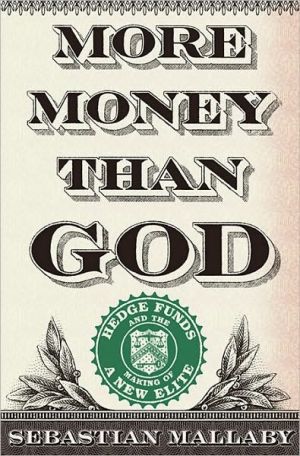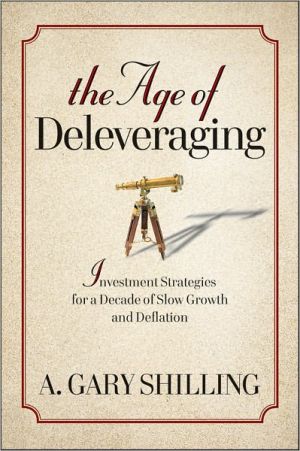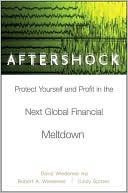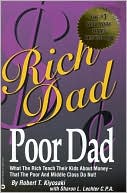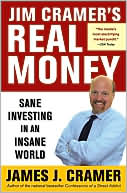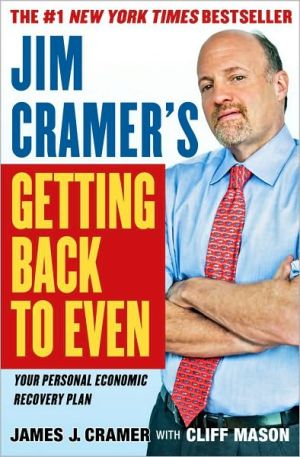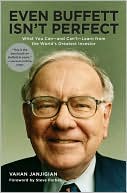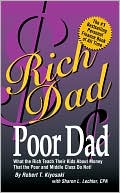More Money Than God: Hedge Funds and the Making of a New Elite
"Splendid...the definitive history of the hedge fund, a compelling narrative full of larger-than-life characters and dramatic tales." — The Washington Post\ Wealthy, powerful, and potentially dangerous, hedge fund moguls have become the It Boys of twenty-first- century capitalism. Beating the market was long thought to be impossible, but hedge funds cracked its mysteries and made fortunes in the process. Drawing on his unprecedented access to the industry, esteemed financial writer Sebastian...
Search in google:
The first authoritative history of hedge funds-from their rebel beginnings to their role in defining the future of finance. Based on author Sebastian Mallaby's unprecedented access to the industry, including three hundred hours of interviews, More Money Than God tells the inside story of hedge funds, from their origins in the 1960s and 1970s to their role in the financial crisis of 2007- 2009. Wealthy, powerful, and potentially dangerous, hedge fund moguls have become the It Boys of twenty-firstcentury capitalism. Ken Griffin of Citadel started out trading convertible bonds from his dorm room at Harvard. Julian Robertson staffed his hedge fund with college athletes half his age, then he flew them to various retreats in the Rockies and raced them up the mountains. Paul Tudor Jones posed for a magazine photograph next to a killer shark and happily declared that a 1929- style crash would be "total rock-and-roll" for him. Michael Steinhardt was capable of reducing underlings to sobs. "All I want to do is kill myself," one said. "Can I watch?" Steinhardt responded. Finance professors have long argued that beating the market is impossible, and yet drawing on insights from physics, economics, and psychology, these titans have cracked the market's mysteries and gone on to earn fortunes. Their innovation has transformed the world, spawning new markets in exotic financial instruments and rewriting the rules of capitalism. More than just a history, More Money Than God is a window on tomorrow's financial system. Hedge funds have been left for dead after past financial panics: After the stock market rout of the early 1970s, after the bond market bloodbath of 1994, after the collapse of Long Term Capital Management in 1998, and yet again after the dot-com crash in 2000. Each time, hedge funds have proved to be survivors, and it would be wrong to bet against them now. Banks such as CitiGroup, brokers such as Bear Stearns and Lehman Brothers, home lenders such as Fannie Mae and Freddie Mac, insurers such as AIG, and money market funds run by giants such as Fidelity-all have failed or been bailed out. But the hedge fund industry has survived the test of 2008 far better than its rivals. The future of finance lies in the history of hedge funds. The New York Times - Chrystia Freeland In More Money Than God, his smart history of the hedge fund business, Mallaby does more than explain how finance's richest moguls made their loot. He argues that the obsessive, charismatic oddballs of the hedge fund world are Wall Street's future—and possibly its salvation…If you are looking for the nose-pressed-into-his-sweaty-armpit carnal intimacy of today's best narrative journalism, I'm afraid you won't find much of it here. Mallaby tells some great stories, but he is more interested in his principals' spreadsheets than their psyches. His forte is a clear and sophisticated explanation of the economic model that earned billions for each of the financiers he profiles.
Introduction: The Alpha Game\ The first hedge-fund manager, Alfred Winslow Jones, did not go to business school. He did not possess a PhD in quantitative finance. He did not spend his formative years at Morgan Stanley, Goldman Sachs, or any other incubator for masters of the universe. Instead, he took a job on a tramp steamer, studied at the Marxist Workers School in Berlin, and ran secret missions for a clandestine anti-Nazi group called the Leninist Organization. He married, divorced, and married again, honeymooning on the front lines of the civil war in Spain, traveling and drinking with Dorothy Parker and Ernest Hemingway. It was only at the advanced age of forty-eight that Jones raked together $100,000 to set up a “hedged fund,” generating extraordinary profits through the 1950s and 1960s. Almost by accident, Jones improvised an investment structure that has endured to this day. It will thrive for years to come, despite a cacophony of naysayers.\ Half a century after Jones created his hedge fund, a young man named Clifford Asness followed in his footsteps. Asness did attend a business school. He did acquire a PhD in quantitative finance. He did work for Goldman Sachs, and he was a master of the universe. Whereas Jones had launched his venture in his mature, starched-collar years, Asness rushed into the business at the grand old age of thirty-one, beating all records for a new start-up by raising an eye-popping $1 billion. Whereas Jones had been discreet about his methods and the riches that they brought, Asness was refreshingly open, tearing up his schedule to do TV interviews and confessing to the New York Times that “it doesn’t suck” to be worth millions. By the eve of the subprime mortgage crash in 2007, Asness’s firm, AQR Capital Management, was running a remarkable $38 billion and Asness himself personified the new globe-changing finance. He was irreverent, impatient, and scarcely even bothered to pretend to be grown up. He had a collection of plastic superheroes in his office.\ Asness freely recognized his debt to Jones’s improvisation. His hedge funds, like just about all hedge funds, embraced four features that Jones had combined to spectacular effect. To begin with, there was a performance fee: Jones kept one fifth of the fund’s investment profits for himself and his team, a formula that sharpened the incentives of his lieutenants. Next, Jones made a conscious effort to avoid regulatory red tape, preserving the flexibility to shape-shift from one investment method to the next as market opportunities mutated. But most important, from Asness’s perspective, were two ideas that had framed Jones’s investment portfolio. Jones had balanced purchases of promising shares with “short selling” of unpromising ones, meaning that he borrowed and sold them, betting that they would fall in value. By being “long” some stocks and “short” others, he insulated his fund at least partially from general market swings; and having hedged out market risk in this fashion, he felt safe in magnifying, or “leveraging,” his bets with borrowed money. As we will see in the next chapter, this combination of hedging and leverage had a magical effect on Jones’s portfolio of stocks. But its true genius was the one that Asness emphasized later: The same combination could be applied to bonds, futures, swaps, and options—and indeed to any mixture of these instruments. More by luck than by design, Jones had invented a platform for strategies more complex than he himself could dream of.\ No definition of hedge funds is perfect, and not all the adventures recounted in this book involve hedging and leverage. When George Soros and Stan Druckenmiller broke the British pound, or when John Paulson shorted the mortgage bubble in the United States, there was no particular need to hedge—as we shall see later. When an intrepid commodities player negotiated the purchase of the Russian government’s entire stock of non- gold precious metals, leverage mattered less than the security around the armored train that was to bring the palladium from Siberia. But even when hedge funds are not using leverage and not actually hedging, the platform created by A. W. Jones has proved exceptionally congenial. The freedom to go long and short in any financial instrument in any country allows hedge funds to seize opportunities wherever they exist. The ability to leverage allows hedge funds to size each bet to maximum effect. Performance fees create a powerful incentive to coin money.\ Ah yes, that money! At his death in 1913, J. Pierpont Morgan had accumulated a fortune of $1.4 billion in today’s dollars, earning the nickname “Jupiter” because of his godlike power over Wall Street. But in the bubbly first years of this century, the top hedge-fund managers amassed more money than God in a couple of years of trading. They earned more— vastly more—than the captains of Wall Street’s mightiest investment banks and eclipsed even private-equity barons. In 2006 Goldman Sachs awarded its chief executive, Lloyd C. Blankfein, an unprecedented $54 million, but the bottom guy on Alpha magazine’s list of the top twenty-five hedge-fund earners reportedly took home $240 million. That same year, the leading private-equity partnership, Blackstone Group, rewarded its boss, Stephen Schwarzman, with just under $400 million. But the top three hedge-fund moguls each were said to have earned more than $1 billion. 3 The compensation formula devised by Jones conjured up hundreds of fast fortunes, not to mention hundreds of fast cars in the suburbs of Connecticut. Reporting from the epicenter of this gold rush, the Stamford Advocate observed that six local hedge-fund managers had pocketed a combined $2.15 billion in 2006. The total personal income of all the people in Connecticut came to $150 billion.\ In the 1990s magazines drooled over the extravagance of dot-com millionaires, but now the spotlight was on hedge funds. Ken Griffi n, the creator of Citadel Investment Group, bought himself a $50 million Bombardier Express private jet and had it fitted with a crib for his two-year-old. Louis Bacon, the founder of Moore Capital, acquired an island in the Great Peconic Bay, put transmitters on the local mud turtles to monitor their mating habits, and hosted traditional English pheasant shoots. Steven Cohen, the boss of SAC Capital, equipped his estate with a basketball court, an indoor pool, a skating rink, a two-hole golf course, an organic vegetable plot, paintings by van Gogh and Pollock, a sculpture by Keith Haring, and a movie theater decorated with the pattern of the stars on his wedding night sixteen years earlier. The hedge-fund titans were the new Rockefellers, the new Carnegies, the new Vanderbilts. They were the new American elite—the latest act in the carnival of creativity and greed that powers the nation forward.\ And what an elite this was. Hedge funds are the vehicles for loners and contrarians, for individualists whose ambitions are too big to fit into established fi nancial institutions. Cliff Asness is a case in point. He had been a rising star at Goldman Sachs, but he opted for the freedom and rewards of running his own shop; a man who collects plastic superheroes is not going to remain a salaried antihero for long, at least not if he can help it. Jim Simons of Renaissance Technologies, the mathematician who emerged in the 2000s as the highest earner in the industry, would not have lasted at a mainstream bank: He took orders from nobody, seldom wore socks, and got fired from the Pentagon’s code-cracking center after denouncing his bosses’ Vietnam policy. Ken Griffin of Citadel, the second highest earner in 2006, started out trading convertible bonds from his dorm room at Harvard; he was the boy genius made good, the financial version of the entreprenerds who forged tech companies such as Google. The earliest pioneers of the industry were cut from equally bright cloth. Julian Robertson staffed his hedge fund with college athletes half his age; then he flew them out to various retreats in the Rockies and raced them up the mountains. Michael Steinhardt was capable of reducing underlings to sobs. “All I want to do is kill myself,” one said. “Can I watch?” Steinhardt responded.\ Like the Rockefellers and Carnegies before them, the new moguls made their mark on the world beyond business and finance. George Soros was the most ambitious in his reach: His charities fostered independent voices in the emerging ex-communist nations; they pushed for the decriminalization of drugs; they funded a rethink of laissez-faire economics. Paul Tudor Jones, the founder of Tudor Investment Corporation, created Robin Hood, one of the first “venture philanthropies” to fight poverty in New York City: It identified innovative charities, set demanding benchmarks for progress, and paid for performance. Bruce Kovner emerged as a godfather of the neoconservative movement, chairing the American Enterprise Institute in Washington, D.C.; Michael Steinhardt bankrolled efforts to create a new secular Judaism. But of course it was in finance that these egos made the most impact. The story of hedge funds is the story of the frontiers of finance: of innovation and increasing leverage, of spectacular triumphs and humiliating falls, and of the debates spawned by these dramas.\ For much of their history, hedge funds have skirmished with the academic view of markets. Of course, academia is a broad church, teaming with energetic skeptics. But from the mid 1960s to the mid 1980s, the prevailing view was that the market is efficient, prices follow a random walk, and hedge funds succeed mainly by being lucky. There is a powerful logic to this account. If it were possible to know with any confidence that the price of a particular bond or equity is likely to move up, smart investors would have pounced and it would have moved up already. Pouncing investors ensure that all relevant information is already in prices, though the next move of a stock will be determined by something unexpected. It follows that professional money managers who try to foresee price moves will generally fail in their mission. As this critique anticipates, plenty of hedge funds have no real “edge”—if you strip away the marketing hype and occasional flashes of dumb luck, there is no distinctive investment insight that allows them to beat the market consistently. But for the successful funds that dominate the industry, the efficient-market indictment is wrong. These hedge funds could drop their h and be called edge funds.\ Where does this edge come from? Sometimes it consists simply of picking the best stocks. Despite everything that the finance literature asserts, A. W. Jones, Julian Robertson, and many Robertson protégés clearly did add value in this way, as we shall see presently. But frequently the edge consists of exploiting kinks in the efficient-market theory that its proponents conceded at the start, even though they failed to emphasize them.\ The theorists stipulated, for example, that prices would be efficient only if liquidity was perfect—a seller who offers a stock at the efficient price should always be able to find a buyer, since otherwise he will be forced to offer a discount, rendering the price lower than the efficient level. But in the 1970s and 1980s, a big pension fund that wanted to dump a large block of shares could not actually find a buyer unless it offered a discount. Michael Steinhardt made his fortune by milking these discounts in a systematic way. An unassuming footnote in the efficient-market view became the basis for a hedge-fund legend.\ The nature of hedge funds’ true edge is often obscured by their bosses’ pronouncements. The titans sometimes seem like mystic geniuses: They rack up glorious returns but cannot explain how they did it. Perhaps the most extreme version of this problem is presented by the young Paul Tudor Jones. To this day, Jones maintains that he anticipated the 1987 crash because his red-suspendered, twenty-something colleague, Peter Borish, had mapped the 1980s market against the charts leading up to 1929; seeing that the two lines looked the same, Jones realized that the break was coming. But this explanation of Jones’s brilliant market timing is inadequate, to say the least. For one thing, Borish admitted to massaging the data to make the two lines fit. For another, he predicted that the crash would hit in the spring of 1988; if Jones had really followed Borish’s counsel, he would have been wiped out when the crash arrived the previous October. In short, Jones succeeded for reasons that we will explore later, not for the reasons that he cites. The lesson is that genius does not always understand itself—a lesson, incidentally, that is not confined to finance. “Out of all the research that we’ve done with top players, we haven’t found a single player who is consistent in knowing and explaining exactly what he does,” the legendary tennis coach Vic Braden once complained. “They give different answers at different times, or they have answers that simply are not meaningful.”\ Starting in the 1980s, financial academics came around to the view that markets were not so efficient after all. Sometimes their conversions were deliciously perfect. A young economist named Scott Irwin procured an especially detailed price series for commodity markets from a small firm in Indianapolis, and after painstaking analysis he proclaimed that prices moved in trends—the changes were not random. Little did he know that, almost twenty years earlier, a pioneering hedge fund called Commodities Corporation had analyzed the same data, reached the same conclusion, and programmed a computer to trade on it. Meanwhile, other researchers acknowledged that markets were not perfectly liquid, as Steinhardt had discovered long before, and that investors were not perfectly rational, a truism to hedge-fund traders. The crash of 1987 underlined these doubts: When the market’s valuation of corporate America changed by a fifth in a single trading day, it was hard to believe that the valuation deserved much deference. “If the efficient markets hypothesis was a publicly traded security, its price would be enormously volatile,” the Harvard economists Andrei Shleifer and Lawrence Summers wrote mockingly in 1990. “But the stock in the efficient markets hypothesis—at least as it has traditionally been formulated—crashed along with the rest of the market on October 19, 1987.”\ The acknowledgment of the limits to market efficiency had a profound effect on hedge funds. Before, the prevailing line from the academy had been that hedge funds would fail. After, lines of academics were queuing up to join them. If markets were inefficient, there was money to be made, and the finance professors saw no reason why they should not be the ones to profit. Cliff Asness was fairly typical of the new wave. At the University of Chicago’s Graduate School of Business, his thesis adviser was Eugene Fama, one of the fathers of the efficient-market hypothesis. But by 1988, when Asness arrived in Chicago, Fama was leading the revisionist charge: Along with a younger colleague, Kenneth French, Fama discovered nonrandom patterns in markets that could be lucrative for traders. After contributing to this literature, Asness headed off to Wall Street and soon opened his hedge fund. In similar fashion, the Nobel laureates Myron Scholes and Robert Merton, whose formula for pricing options grew out of the efficient-markets school, signed up with the hedge fund Long-Term Capital Management. Andrei Shleifer, the Harvard economist who had compared the efficient-market theory to a crashing stock, helped to create an investment company called LSV with two fellow finance professors. His coauthor, Lawrence Summers, made the most of a gap between stints as president of Harvard and economic adviser to President Obama to sign on with D. E. Shaw, a quantitative hedge fund.\ Yet the biggest effect of the new inefficient-market consensus was not that academics flocked to hedge funds. It was that institutional investors acquired a license to entrust vast amounts of capital to them. Again, the years after the 1987 crash were an inflection point. Before, most money in hedge funds had come from rich individuals, who presumably had not heard academia’s message that it was impossible to beat the market. After, most money in hedge funds came from endowments, which had been told by their learned consultants that the market could be beaten—and which wanted in on the action. The new wave was led by David Swensen, the boss of the Yale endowment, who focused on two things. If there were systematic patterns in markets of the sort that Fama, French, and Asness had identified, then hedge funds could milk these in a systematic way: There were strategies that could be expected to do well, and they could be identified prospectively. Further, the profits from these strategies would be more than just good on their own terms. They would reduce an endowment’s overall risk through the magic of diversification. The funds that Swensen invested in were certainly diverse: In 2002, a swashbuckling West Coast fund named Farallon swooped into Indonesia and bought the country’s largest bank, undeterred by the fact that a currency collapse, a political revolution, and Islamist extremism had scared most westerners out of the country. Following Swensen’s example, endowments poured money into hedge funds from the 1990s on, seeking the uncorrelated returns that endowment gurus called “alpha.”\ The new inefficient-market view also imbued hedge funds with a social function. This was the last thing they had sought: They had gotten into the alpha game with one purpose above all, and that was to make money. But if alpha existed because markets were inefficient, it followed that savings were being allocated in an irrational manner. The research of Fama and French, for example, showed that unglamorous “value” stocks were underpriced relative to overhyped “growth” stocks. This meant that capital was being provided too expensively to solid, workhorse firms and too cheaply to their flashier rivals: Opportunities for growth were being squandered. Similarly, the discounts in block trading showed that prices could be capricious in small ways, raising risks to investors, who in turn raised the premium that they charged to users of their capital. It was the function of hedge funds to correct inefficiencies like these. By buying value stocks and shorting growth stocks, Cliff Asness was doing his part to reduce the unhealthy bias against solid, workhorse firms. By buying Ford’s stock when it dipped illogically after a large-block sale, Michael Steinhardt was ensuring that the grandma who owned a piece of Ford could always count on getting a fair price for it. By computerizing Steinhardt’s art, statistical arbitrageurs such as Jim Simons and David Shaw were taking his mission to the next level. The more markets could be rendered efficient, the more capital would flow to its most productive uses. The less prices got out of line, the less risk there would presumably be of financial bubbles—and so of sharp, destabilizing corrections. By flattening out the kinks in market behavior, hedge funds were contributing to what economists called the “Great Moderation.”\ But hedge funds also raised an unsettling question. If markets were prone to wild bubbles and crashes, might not the wildest players render the turbulence still crazier? In 1994, the Federal Reserve announced a tiny one-quarter-of-a-percentage-point rise in short-term interest rates, and the bond market went into a mad spin; leveraged hedge funds had been wrong- footed by the move, and they began dumping positions furiously. Foreshadowing future financial panics, the turmoil spread from the United States to Japan, Europe, and the emerging world; several hedge funds sank, and for a few hours it even looked as though the storied firm of Bankers Trust might be dragged down with them. As if this were not warning enough, the world was treated to another hedge-fund failure four years later, when Long-Term Capital Management and its crew of Nobel laureates went bust; terrified that a chaotic bankruptcy would topple Lehman Brothers and other dominoes besides, panicked regulators rushed in to oversee LTCM’s burial. Meanwhile, hedge funds wreaked havoc with exchange-rate policies in Europe and Asia. After the East Asian crisis, Malaysia’s prime minister, Mahathir Mohamad, lamented that “all these countries have spent 40 years trying to build up their economies and a moron like Soros comes along with a lot of money to speculate and ruins things.”\ And so, by the start of the twenty-first century, there were two competing views of hedge funds. Sometimes the funds were celebrated as the stabilizing heroes who muscled inefficient prices into line. Sometimes they were vilified as the weak links whose own instability or wanton aggression threatened the global economy. The heart of the matter was the leverage embraced by A. W. Jones—or rather, a vastly expanded version of it. Leverage gave hedge funds the ammunition to trade in greater volume, and so to render prices more efficient and stable. But leverage also made hedge funds vulnerable to shocks: If their trades moved against them, they could burn through thin cushions of capital at lightning speed, obliging them to dump positions fast—destabilizing prices.11 After the bond-market meltdown of 1994 and the Long-Term Capital failure in 1998, the two competing views of hedge funds wrestled to a stalemate. In the United States and Britain, hedge funds’ stabilizing impact received the most emphasis; elsewhere, the risk of destabilizing panics got most of the attention. Funnily enough, the countries that liked hedge funds the best were also the ones that hosted them.\ Then came the crisis of 2007–2009, and every judgment about finance was thrown into question. Whereas the market disruptions of the 1990s could be viewed as a tolerable price to pay for the benefits of sophisticated and leveraged finance, the convulsion of 2007–2009 triggered the sharpest recession since the 1930s. Inevitably, hedge funds were caught up in the panic. In July 2007, a credit hedge fund called Sowood blew up, and the following month a dozen or so quantitative hedge funds tried to cut their positions all at once, triggering wild swings in the equity market and billions of dollars of losses. The following year was more brutal by far. The collapse of Lehman Brothers left some hedge funds with money trapped inside the bankrupt shell, and the turmoil that followed inflicted losses on most others. Hedge funds needed access to leverage, but nobody lent to anyone in the weeks after the Lehman shock. Hedge funds built their strategies on short selling, but governments imposed clumsy restrictions on shorting amid the post-Lehman panic. Hedge funds were reliant upon the patience of their investors, who could yank their money out on short notice. But patience ended abruptly when markets went into a tailspin. Investors demanded their capital back, and some funds withheld it by imposing “gates.” Surely now it was obvious that the risks posed by hedge funds outweighed the benefits? Far from bringing about the Great Moderation, they had helped to trigger the Great Cataclysm.\ This conclusion, though tempting, is almost certainly mistaken. The cataclysm has indeed shown that the financial system is broken, but it has not actually shown that hedge funds are the problem. It has demonstrated, to begin with, that central banks may have to steer economies in a new way: Rather than targeting consumer-price inflation and turning a blind eye to asset-price inflation, they must try to let the air out of bubbles—a lesson first suggested, incidentally, by the hedge-fund blowup of 1994. If the Fed had curbed leverage and raised interest rates in the mid 2000s, there would have been less craziness up and down the chain. American households would not have increased their borrowing from 66 percent of GDP in 1997 to 100 percent a decade later. Housing finance companies would not have sold so many mortgages regardless of borrowers’ ability to repay. Fannie Mae and Freddie Mac, the two government-chartered home lenders, would almost certainly not have collapsed into the arms of the government. Banks like Citigroup and broker-dealers like Merrill Lynch would not have gorged so greedily on mortgage-backed securities that ultimately went bad, squandering their capital. The Fed allowed this binge of borrowing because it was focused resolutely on consumer-price inflation, and because it believed it could ignore bubbles safely. The carnage of 2007–2009 demonstrated how wrong that was. Presented with an opportunity to borrow at near zero cost, people borrowed unsustainably.\ The crisis has also shown that financial firms are riddled with dysfunctional incentives. The clearest problem is “too big to fail”—Wall Street behemoths load up on risk because they expect taxpayers to bail them out, and other market players are happy to abet this recklessness because they also believe in the government backstop. But this too-big-to-fail problem exists primarily at institutions that the government has actually rescued: commercial banks such as Citigroup; former investment banks such as Goldman Sachs and Morgan Stanley; insurers such as AIG; the money- market funds that received an emergency government guarantee at the height of the crisis. By contrast, hedge funds made it through the mayhem without receiving any direct taxpayer assistance: There is no precedent that says that the government stands behind them. Even when Long-Term Capital collapsed in 1998, the Fed oversaw its burial but provided no money to cover its losses. At some point in the future, a supersized hedge fund may prove to be too big to fail, which is why the largest and most leveraged should be subject to regulation. But the great majority of hedge funds are too small to threaten the broader financial system. They are safe to fail, even if they are not fail-safe.\ The other skewed incentive in finance involves traders’ pay packages. When traders take enormous risks, they earn fortunes if the bets pay off. But if the bets go wrong, they don’t endure symmetrical punishment— the performance fees and bonuses dry up, but they do not go negative. Again, this heads-I-win-tails-you-lose problem is sharper at banks than at hedge funds. Hedge funds tend to have “high-water marks”: If they lose money one year, they take reduced or even no performance fees until they earn back their losses. Hedge-fund bosses mostly have their own money in their funds, so they are speculating with capital that is at least partly their own—a powerful incentive to avoid losses. By contrast, bank traders generally face fewer such restraints; they are simply risking other people’s money. Perhaps it is no surprise that the typical hedge fund is far more cautious in its use of leverage than the typical bank. The average hedge fund borrows only one or two times its investors’ capital, and even those that are considered highly leveraged generally borrow less than ten times. Meanwhile investment banks such as Goldman Sachs or Lehman Brothers were leveraged thirty to one before the crisis, and commercial banks like Citi were even higher by some measures.\ The very structure of hedge funds promotes a paranoid discipline. Banks tend to be establishment institutions with comfortable bosses; hedge funds tend to be scrappy upstarts with bosses who think nothing of staying up all night to see a deal close. Banks collect savings from households with the help of government deposit insurance; hedge funds have to demonstrate that they can manage risk before they can raise money from clients. Banks know that if they face a liquidity crisis they have access to the central bank’s emergency lending, so they are willing to rely heavily on short-term loans; hedge funds have no such safety net, so they are increasingly reluctant to depend on short-term lending. Banks take the view that everything is going wonderfully so long as borrowers repay; hedge funds mark their portfolios to market, meaning that slight blips in the risk that borrowers will hit trouble in the future can affect the hedge funds’ bottom line immediately. Banks’ investment judgment is often warped by their pursuit of underwriting or advisory fees; hedge funds live and die by their investment performance, so they are less distracted and conflicted. For all these reasons, a proper definition of hedge funds should stress their independence. So-called hedge funds that are the subsidiaries of large banks lack the paranoia and focus that give true hedge funds their special character.\ As I finished writing this book, in early 2010, regulators seemed poised to clamp down on the financial industry. To a large extent, their instincts were right: At their peak, financial companies hogged more human capital than they deserved, and they took risks that cost societies dearly. But Wall Street’s critics should pause before they sweep hedge funds into their net. Who, in the final analysis, will manage risk better? Commercial banks and investment banks, which either blew up or were bailed out by the government? Mutual-fund companies, which peddled money-market products that the government was forced to backstop? And which sort of future do the critics favor: one in which risk is concentrated inside giant banks for which taxpayers are on the hook, or one in which risk is dispersed across smaller hedge funds that expect no lifelines from the government? The crisis has compounded the moral hazard at the heart of finance: Banks that have been rescued can expect to be rescued all over again the next time they blow up; because of that expectation, they have weak incentives to avoid excessive risks, making blowup all too likely. Capitalism works only when institutions are forced to absorb the consequences of the risks that they take on. When banks can pocket the upside while spreading the cost of their failures, failure is almost certain.\ If they are serious about learning from the 2007–2009 crisis, policy makers need to restrain financial supermarkets with confused and overlapping objectives, encouraging focused boutiques that live or die according to the soundness of their risk management. They need to shift capital out of institutions underwritten by taxpayers and into ones that stand on their own feet. They need to shrink institutions that are too big to fail and favor ones that are small enough to go under. The story of A. W. Jones and his successors shows that a partial alternative to banking supermarkets already exists. To a surprising and unrecognized degree, the future of finance lies in the history of hedge funds.
Introduction: The Alpha Game 1\ 1 Big Daddy 15\ 2 The Block Trader 40\ 3 Paul Samulson's Secret 62\ 4 The Alchemist 83\ 5 Top Cat 109\ 6 Rock-And-Roll Cowboy 130\ 7 White Wednesday 147\ 8 Hurricane Greenspan 172\ 9 Soros Versus Soros 193\ 10 The Enemy is Us 220\ 11 The Dot-Com Double 248\ 12 The Yale Men 265\ 13 The Code Breakers 285\ 14 Premonitions of A Crisis 307\ 15 Riding The Storm 323\ 16 "How Could They Do This?" 348\ Conclusion:Scarier Than What 373\ Acknowledgments 392\ Appendix I Do the Tiger Funds Generate Alpha? 395\ Appendix II Performance of the Pioneers 400\ Notes 408\ Intex 465\ Photo Credits 483
\ From Barnes & NobleWhile you were sleeping last night, hedge fund managers were piling up millions of dollars in profits. Few people outside the business understand how they do it better than Sebastian Mallaby (The World's Banker), the Paul Volcker Senior Fellow in International Economics at the Council on Foreign Relations and Washington Post business columnist. His More Money Than God is the most authoritative history yet of this unregulated, often stunningly successful investment strategy. Words to the wise. Sterling reviews and solid sales in hardcover; now in paperback and NOOKbook.\ \ \ \ \ \ Chrystia FreelandIn More Money Than God, his smart history of the hedge fund business, Mallaby does more than explain how finance's richest moguls made their loot. He argues that the obsessive, charismatic oddballs of the hedge fund world are Wall Street's future—and possibly its salvation…If you are looking for the nose-pressed-into-his-sweaty-armpit carnal intimacy of today's best narrative journalism, I'm afraid you won't find much of it here. Mallaby tells some great stories, but he is more interested in his principals' spreadsheets than their psyches. His forte is a clear and sophisticated explanation of the economic model that earned billions for each of the financiers he profiles.\ —The New York Times\ \ \ Publishers WeeklyJournalist Mallaby (The World's Banker) gives unusually lucid explanations of hedge funds and their balancing of long and short positions with complex derivatives, but what really entrances him is their freedom from regulation, high leverage, and outsized performance incentives. In his telling, they empower a heroic breed of fund managers whose inspired stock picking, currency trading, and futures contracting outsmart the efficient market. In engrossing accounts of epic trades like George Soros's 1993 shorting of the pound sterling and John Paulson's shorting of subprime mortgages, the author celebrates hedge titans' charisma, contrarianism, and market insights. Mallaby contends that hedge funds benefit the economy by correcting market anomalies; because they put managers' money on the line and are small enough to fail, they are more prudent and less disruptive than heavily regulated banks. Mallaby's enthusiasm for an old-school capitalism of unfettered risk taking isn't always persuasive, but he does offer a penetrating look into a shadowy corner of high finance. (June)\ \ \ \ \ Kirkus ReviewsA history of hedge funds that also looks at their role in the recent market crash. Using his extensive background in international finance, Washington Post columnist and Council on Foreign Relations senior fellow Mallaby (The World's Banker: A Story of Failed States, Financial Crises, and the Wealth and Poverty of Nations, 2004, etc.) effectively combines an insider's knowledge with a colorful storytelling ability. What we now know as hedge funds began in the late 1940s as a "hedged fund" invented by a low-profile investor named Alfred Winslow Jones. By then nearing 50, Jones had traveled the world before becoming a Fortune magazine writer. In clear, accessible language, Mallaby explains how Jones devised a specific combination of buying and selling stocks simultaneously, which allowed him to capitalize on bull and bear markets alike-i.e., he hedged against market downturns while riding higher on market upturns than most other money managers. After relating the Jones saga, the author provides a mostly chronological account of later investors who earned billions from variations on the Jones model. Mallaby avoids the sex-drugs-and-rock-'n'-roll aspects of the fast pace and fabulous wealth within the hedge-fund realm to concentrate on the buy-and-sell philosophies promulgated by the "boys." And it is indeed a boys' world-in more than 400 pages of text, no significant female players emerge. In the final third of the book, Mallaby explores the role of hedge funds in the horrific collapse of markets during the first decade of the 21st century. The author explains why he believes hedge funds are less of a risk to the markets than banks and insurers that grew too big to fail. One caveat:Hedge-fund managers usually invest lots of their own money, which means they lose wealth when clients lose wealth. A lively, provocative examination of a little-understood financial realm.\ \
